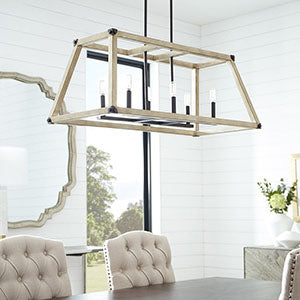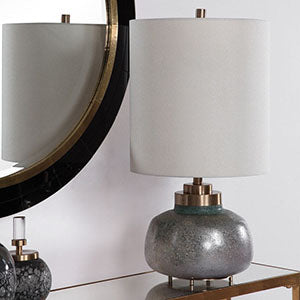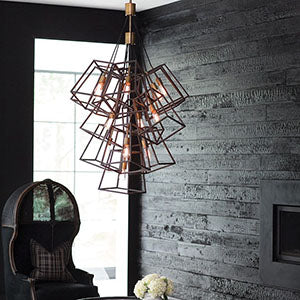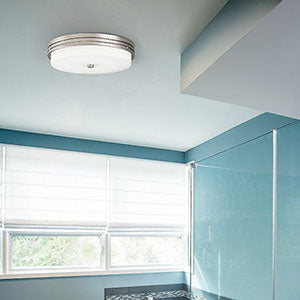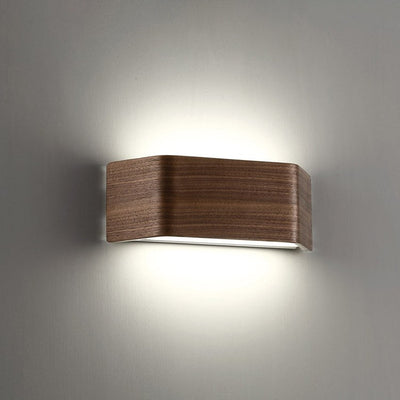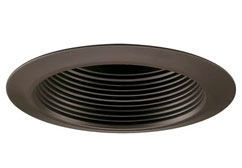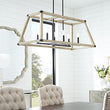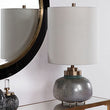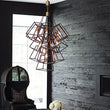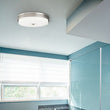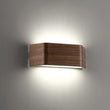Indoor Lighting Ideas to Banish the Winter Blahs

The winter months bring shorter days and lower light levels—outdoors and indoors. While you have no control over the sun, you can use lighting to elevate the warmth and cheer inside your home through the darker months.
Read on to learn how to use wall lights, table lamps, and even décor to brighten your winter days and keep the winter blahs away.
Important note: Decorative lighting isn’t an antidote for seasonal affective disorder (SAD). According to the Mayo Clinic, SAD is linked to changes in the seasons, and usually occurs in fall and winter. See your doctor if you feel down for days at a time, experience changes in your appetite or sleep habits, or stop enjoying activities you once enjoyed.
Indoor Lighting Tips to Make Your Home Bright and Cheerful In Winter

Bring on the brightness. Think beyond one overhead light and one table lamp per room; add floor lamps to chase shadows from corners and sconces to illuminate dark walls.
Choose form over function. Swap-out a ceiling fan with a chandelier, or install cheery pendant lights to a room lit by a single ceiling light. Crystal fixtures add a welcome twinkle to rooms, while exposed Edison-style bulbs and vintage shades emit a warm glow.
Illuminate winter meals. Consider a dining room chandelier with 10 to 15 lights, and use wall sconces and accent lighting for variety.
Light in layers. One light source in a room isn’t enough at any time of year, but especially in the winter. Learn all about light layering, but get started by adding wall sconces to the darkest wall in the living room or a unique desk lamp in the entrance hall.

Increase task lighting. Table lamps are affordable and versatile. Add them to side tables, sofa tables, or consoles for an extra splash or two of light in any room.
Amp up the ambient light. Add recessed lighting to the ceilings of rooms with low light. Consider a wash of downlighting over a wall with a stone fireplace or floor-to-ceiling bookshelves.

Remember room décor. Design elements in a room can darken or brighten the overall space. Here are some strategies to make any space brighter:
- Light-colored throw blankets and pillows on dark furniture.
- Bright and light wall art.
- Mirrors to reflect ambient light.
- Bright area rugs.
- Decor with silver or chrome elements.
- Repaint the rooms where you spend the most time in light or sunny hue.
Have fun with hygge: Pronounced hoo-ga, hygge is a Danish word for the feeling of contentment that comes when you mix conviviality and a cozy environment. Cultivate hygge in your home with decorative accents that suggest welcome and warmth, such as candles, candle sconces, throw blankets, and light fixtures with shades in warm hues.
Room-By-Room Tips For the Best Winter Lighting
Grab a notebook and take inventory of the light in each room at different times of the day. Is your bedroom well-lit in the morning or are your dresser and mirror in a dark corner? Lighting in hallways and foyers gets overlooked. Are these small rooms dreary even on sunny winter days?
As you go, focus on the main uses of each room and how much time you spend there. When adding light, focus first on the rooms—and areas in those rooms—where you spend the most time. It may be the kitchen island or the side of your great room featuring your television and fireplace.
Below, we’ve gathered examples of lighting design that balances task, ambient, and accent lighting to create a warm winter vibe in every room.

Living room: Use a decorative chandelier, ceiling fan, or pendant light cluster in the center of the room to serve as the signature element. From there, move out to the walls with sconces or recessed lighting to bathe the walls in warm brightness. Upward-facing floor lamps—also known as torchieres—reflect light off the ceiling, while table lamps provide balanced accent lighting.
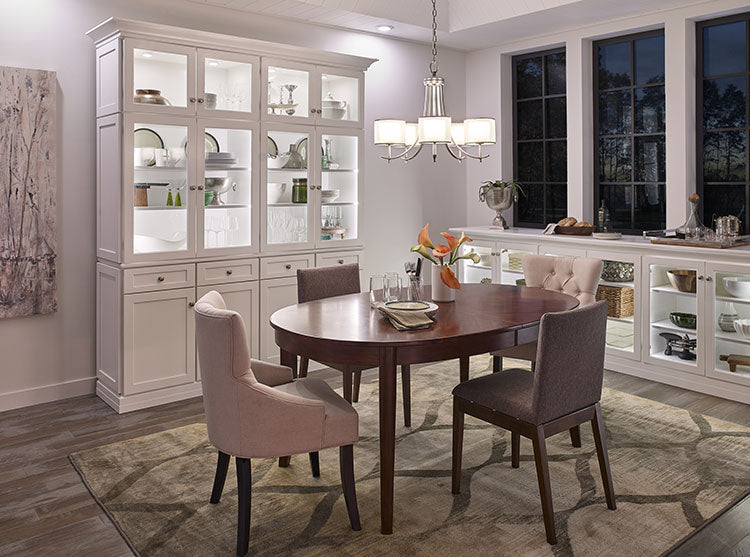
Dining room: Chandeliers and pendants overhead should be balanced with wall sconces and table lamps on sideboards to light the entire room, not just the dinner table. Different intensities—higher in the center, lower on the edges—will create contrast and balance.

Kitchen: Bright task lighting is welcome here with pendants or a chandelier installed over a kitchen island or high-use counters, recessed lights over the stove, and undercabinet lighting.
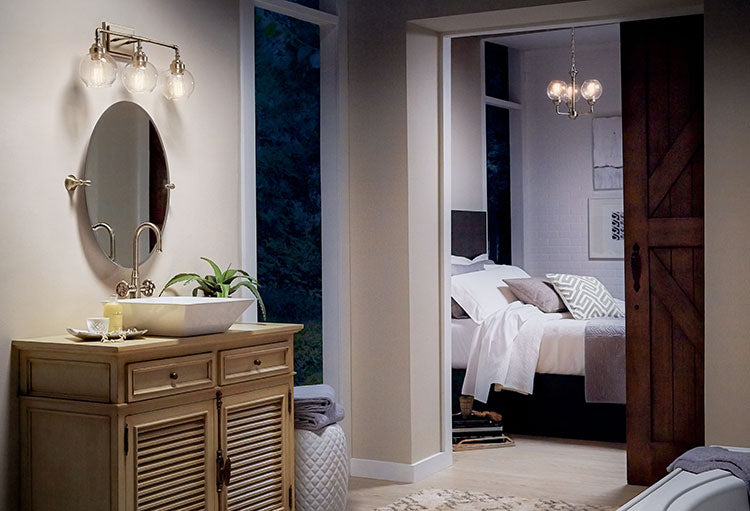
Bathroom: Damp-rated recessed lighting brightens the shower, pendants or chandeliers provide ambient light and eye-catching style, while vanity lighting gives you the brightness you need for your personal care routine.
Bedroom: The room in your home meant for rest should have enough light for tasks when needed, with the option to lower the light for your bedtime routine and relaxing. Wall sconces on either side of your bed free-up room on your nightstands for clocks, artwork, and flower vases. Chandeliers and ceiling fans can serve as good sources of artificial daylight to start your day, while pendants and floor lamps balance out the room by bringing light into dark corners.
Use Tech for the Perfect Light Levels Day and Night
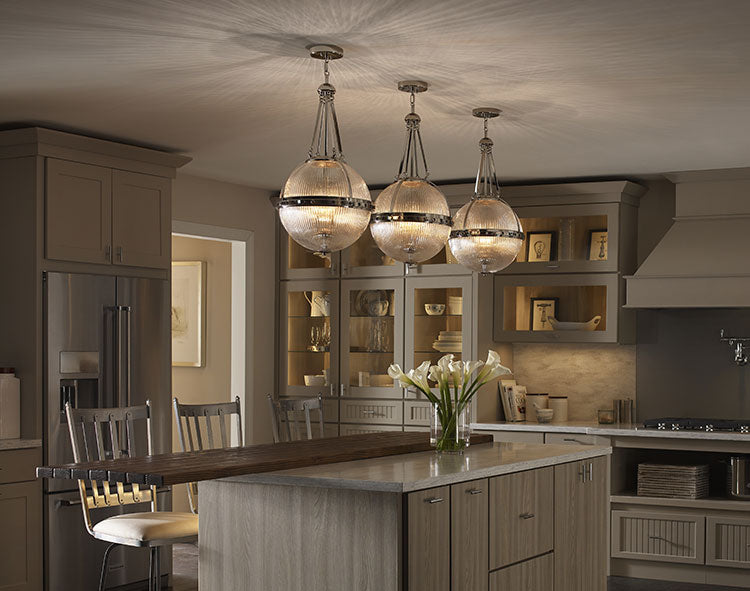
Modern bulb technologies and Internet of Things-connected fixtures let you fine-tune lighting to your preference in winter. Technology to consider:
Smart home lighting. Turn on lights just before you come home from work on winter nights so you don’t enter a dark house. Program your lighting to use blue light fixtures during the day, but transition to fixtures with sleep-friendly color temperatures in the evening.
White tuning. This technology lets you adjust the Kelvins (more on this below) of your LED lighting from ‘sunny daylight’ to ‘warm candlelight.’ In addition to improving your home’s lighting aesthetics, this lets you align lighting to your circadian rhythm for improved well-being.
Dim and brighten. Control the amount of light in a room with dimmers you control by hand or through your smart device. Bright, high-intensity light on overcast winter days can help get you going in the morning, while low light levels set the tone for evening.
Choose Indoor Lighting That Mimics Sunlight
Turn to full-spectrum bulbs to bring the feel of natural sunlight indoors. Full-spectrum lighting has different color temperatures which coincide with different ranges of degrees Kelvin (K). Here is a guide to the general light type emitted by various Kelvin ranges:
2000K - 3000K. Soft candlelight/warm white, casting light that appears orange to yellow-white in appearance. This is the type of light that our bodies are accustomed to being exposed to at night without impacting circadian rhythms (sleeping at night, awake during the day). Good for use at lower temps in ambient lighting for relaxed environments like bedrooms, or at slightly higher temps in bathrooms where you need to see what you are doing.
3100K - 4500K. Bright white light that may have a slight blue tint. Smart option for general purpose work areas like a home office, utility room, or garage.
4600K - 6500K. The beginning of daylight color temperature featuring a crisp blue-white glow. Used in task lighting in kitchens, workshops, and bathrooms.
Common bulb types supporting full-spectrum lighting:
LED. When shopping for LEDs, look at lumens for brightness, and color temperature. If you plan on using dimmers with LED lights, either shop for dimmable LEDs or replace your standard dimmer with an LED-compatible model to avoid any flickering and humming.
Blue light is implicated in the suppression of melatonin, the hormone that helps you wind down for sleep. Minimize blue light exposure in the late afternoon and evening by using specialty LEDs with low blue-light levels, or use non-LEDs in the light fixtures you use most at night.
Halogen: More cost-efficient than incandescents, halogen bulbs produce a clear, crisp light with a warm, yellow glow different from the blue light of standard LEDs.
The pluses of halogen lights include their compact size and varied shapes. Their color rendering is ideal as task lighting for makeup and personal grooming. On the minus side, they are hot to the touch and have a relatively short lifespan.
Incandescent: Versatile, inexpensive, and dimmable, incandescents hit full brightness at the flick of a switch. They don’t flicker and come in varied shapes and sizes. On the downside, incandescents are heat-producing, fragile, and inefficient, producing only 5 to 20 lumens per watt, resulting in higher operating costs.
The winter doldrums are real, especially towards the end of the season. But beautiful light fixtures and attention to light color bring a dash of cheer indoors until those first bright days of spring. As always, if you are adding lighting options that require wall or ceiling wiring, consult an electrician.
Next, discover design modifications for a welcoming and accessible home year-round.

